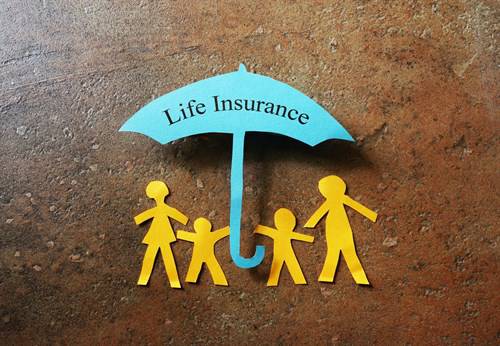Need for Life Insurance?
All across the world, life insurance is considered one of the most important assets in anyone's long-term financial planning. It acts as a security measure for your family upon death, it will help provide the financial care they need. USA Life insurance can help your spouse continue the house payments and daily expenses and further fund your children's education in USA.
Understanding Life Insurance
The Contract and Its Types Life insurance works much the same as a policyholder coming into an agreement with an insurance carrier. This contract would pay out in case of death, hence providing for a death benefit according to the terms of the policy. There are many kinds of life insurance, from term to permanent. Immediately following the death of the insured, the claiming process starts and the processes involved in payout. One should provide beneficiaries of life insurance, either individuals or organizations. In this context, Countries like the USA Often follow this Process beneficiaries may use the payout in a number of different forms including lump-sum payment, installment payment, annuity, and retained asset account.
The Scope and Implications of Life Insurance
The type and level of life insurance people buy vary significantly depending on their needs, usually with the objective of sustaining the dependents in the event of an untimely death of the insured. The policy of life insurance binds the insurance company to the requirement of paying the death benefit to the beneficiary of the USA policyholder when death occurs, provided the USA policy status is active during that time of death.
Generally, the death benefit is tax-free unless the premiums are deductible, representing a specific permissible expense type. Principal policy: The basic aim of life assurance is to provide a source of finance to a family at the event of the death of a member of the family & USA Is Considered a Lot in this Regard.

Life insurance is not necessarily oriented to the provider of income - it also covers the spouse who does not work but has enormous, important duties within the household, whose sudden death would result in new childcare and housekeeping expenses. Life insurance is, therefore, vitally important in these situations, unless otherwise stated or excluded in the contract.
The Intricacies of Life Insurance: Life insurance policies can be as low as $5,000 in coverage or as high as $50,000,000. Of course, with those sorts of face amounts, underwriting becomes far more strict as the stakes are that much higher. Underwriting generally includes a health questionnaire complete with a physical examination involving blood and urine samples, usually paid for by the USA insurance company or brokerage.
The two most basic components of life insurance are a death benefit and the premium. This typically involves term policies and GUL.
The term policies have a defined length, but GULs could last until the age of 121.
More Than the Basics: Cash Value Component and Other Features in USA.
Another feature of life insurance is that it provides for a cash value to grow premiums at a guaranteed USA interest rate.
This may be through a guarantee of interest rate plus dividend or through index interest qualification, or possibly because of investment in a mutual fund-like account. This kind of policy, such as universal life, whole life, indexed universal life, variable universal life, are typically permanent.
Life insurance can be provided through work as part of a cafeteria plan, which typically addresses long-term health benefits such as critical illness and long-term care coverage in USA.
It is very important to know the different aspects associated with USA People life insurance—the types available in USA, how underwriting works, the possible benefits and payouts—as all this information will equip you for your long-term financial planning, thus securing the future of your dependents by offering financial stability even when you are no longer there. There are many forms of life insurance, and people buy varying amounts of coverage for a variety of purposes, usually to provide for dependents of the person insured in the event of untimely death. Insurer liability refers to life insurance, which is a contractual duty on an entity to pay a death benefit to the beneficiary upon death while the policy is in force. Most people are familiar with accidental death insurance; these can often be added on to a life insurance policy to provide extra protection. Certainly, health and other risk factors are used to underwrite life insurance companies' policies.
There is also an immensely wide array of life insurance that adds a cash value component in which the premiums grow at a fixed rate or at a fixed rate plus dividend or index interest eligibility, or from a portfolio invested in mutual fund-like accounts. These tend to be permanent but can be paid up in the first few years if significant cash infusion occurs. These are referred to as universal life, whole life, indexed universal life, variable universal life and so on. Life insurance can be offered with a cafeteria plan offer of employment with minimal or no underwriting applied for small face amounts. It can also include long term health benefits such as critical illness coverage and long term care coverage. Though based on some core principles, global life insurance policies differ in their details by regional regulations, market practices, and cultural attitudes. Presented below is a synopsis of typical features, benefits, and considerations of global life insurance policies:
Common Features of Worldwide Life Insurance Policies
Policy Types
Term Life Insurance: It provides coverage for a specified term but does not have any component for the savings.
Whole Life Insurance: It offers coverage throughout life with a savings element that grows cash value.
Universal Life Insurance: This has flexible premiums and death benefits, with an added component of cash value.
Variable Life Insurance: This adds investment options to the cash value with protection against death benefits.
Endowment Policies: In these, a lump sum is payable after a specified term or upon the death of a policyholder.
Amounts of Coverage
These range greatly depending on the policyholder's needs and financial goals, and are also subject to changes in the market.
Also, it is normally driven by factors like age, health, occupation, and lifestyle USA.
Fixed and level depending on the type of policy.
Premiums are determined by factors such as age, health condition, smoker or nonsmoker, occupation, and amount of coverage.
Cash Value Component in USA.
Applied to whole life, universal life, and variable life
The cash value increases over some time and is at one's disposal in the event of a loan or withdrawal from it, also used in the payment of premium.
Death Benefit
The face amount - The reason for buying the policy: to leave behind money to the person's beneficiaries at death.
Can be fixed or varied depending on policy type and terms.
Riders - Additional attachments to the policy that provide additional benefits / coverage, including but not limited to the following—
Accidental Death Benefit: An additional amount provided if death results from an accident
Waiver of Premium: Upon disablement of a policyholder, premiums can be waived off.
Critical Illness Rider: A lump sum is paid if a critical illness is diagnosed.
Regional Variations and Considerations
USA and Canada
Atypical, extensive regulatory frameworks are present, like for example, NAIC in the USA and OSFI in Canada.
• Products: The existence of the entire gamut of life insurance products encompasses term, whole, universal, and variable life insurance.
• Tax Benefits: In general, life insurance policies are tax-free for the beneficiary and also USA Is Considered a Lot in this Regard.
Europe
• Western Europe: Mature markets characterized by a significant degree of protection available to consumers and a reasonable level of regulation in force.
• Eastern Europe: Rapidly growing emerging markets with increasing demand based and developing regulatory frameworks.
• Products: Popularity of whole life and endowment policies; rising demand for term life policies in USA.
Asia
Japan: One of the world's largest life insurance markets, with high demand for whole life and endowment policies.
India Dynamic growth markets with an increasing middle class and a supportive reform environment.
Products: Classic and new-generation products with strong savings and investment elements.
Latin America
• Brazil and Mexico are leading markets in which economic growth and increasing financial literacy have paved the way for the full blooming of the life insurance sector.
• These challenges range from different regulatory barriers to economic volatility, which has the capacity to disturb the very stability of the market. The frequent policies are term and whole life while universal life is getting much attention. Africa
• South Africa is the continent's most evolved USA life insurance market. It offers a wide range of products under strong regulatory control.
• Other Regions: Markets at fledgling stage, low penetration.Countries like the USA Often follow this Process.
Microinsurance and community-based models on rise.
• Products: Emphasis on affordability, accessibility with innovative microinsurance solutions.
Middle East
• GCC Countries: Steadily growing Life Insurance markets, expat demand, new financial awareness. Strong on Takaful, or Islamic insurance.
• Challenges: Cultural, religious sensitivities impact market dynamic
• Products: Takaful products and conventional term and whole life USA policy.
Things to Consider for the Policyholder
1. Regulatory Climate
Be conversant with the regulatory framework that controls life products and companies at the local level.
2. Currency and Inflation
The policy value and premiums could be impacted by currency fluctuations and inflation.
3. Tax Implications
Local tax benefits or liabilities of life insurance policies may differ in other countries. Be aware of the country's tax treatments on policies.
4. Economic Stability
• The USA economy may affect which products are available within the life market and at what price.
5. Cultural Factors
• Insurance and financial planning attitudes differ from culture to culture. Design products and marketing strategies as needed.
6. Technological Innovations
• The industry is getting redesigned with digital platforms, online management of policies, etc. increasing accessibility, convenience
7.Global Life Insurance Benefits
• Financial Security: Helps the dependants by providing income source to the fallen family members due to the demise of their loved one.
8. Savings Element: Some policies generate cash value that one can either borrow, withdraw or as an investment.
• Tax Advantages: USA Life insurance proceeds are, in most countries, tax-free to the beneficiaries.
9. Peace of Mind: A person will be able to have peace of mind in knowing that his or her family is well protected USA financially.
Posted on 2024/08/08 07:51 AM




